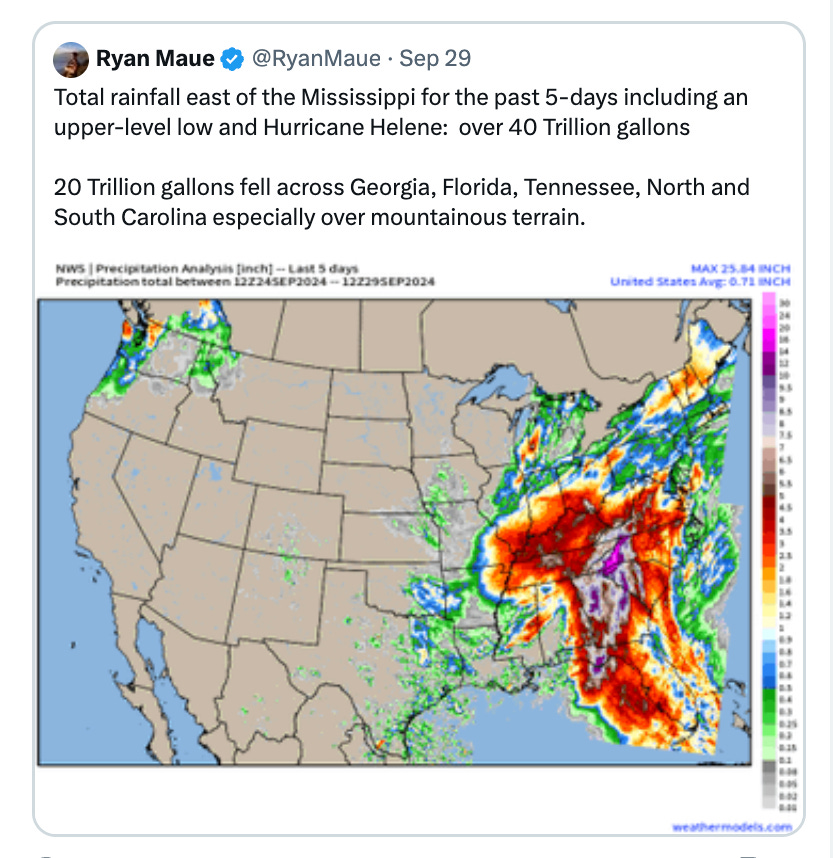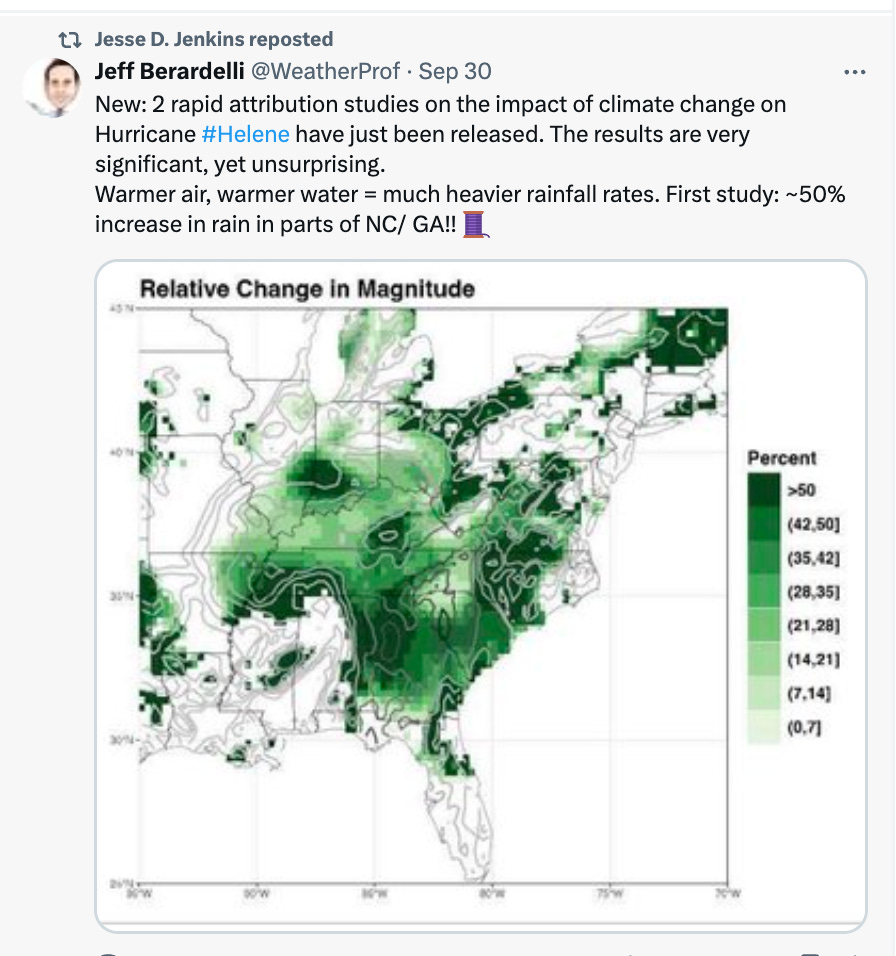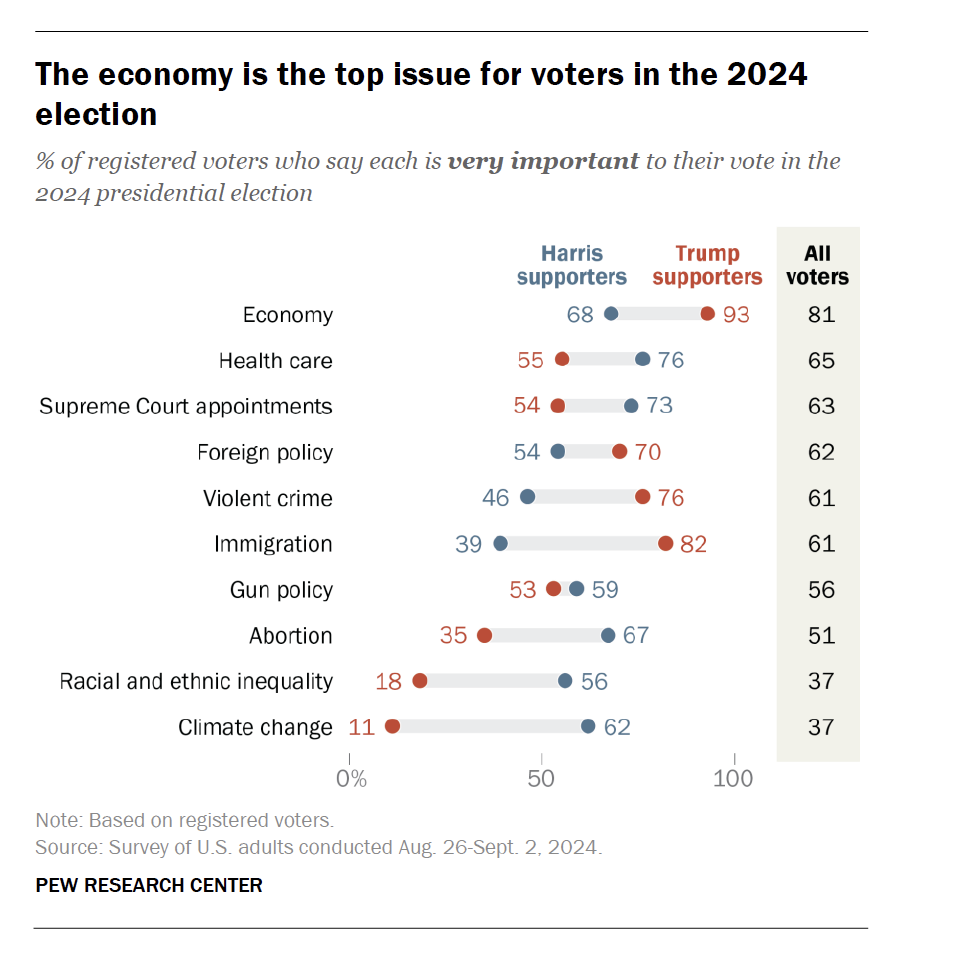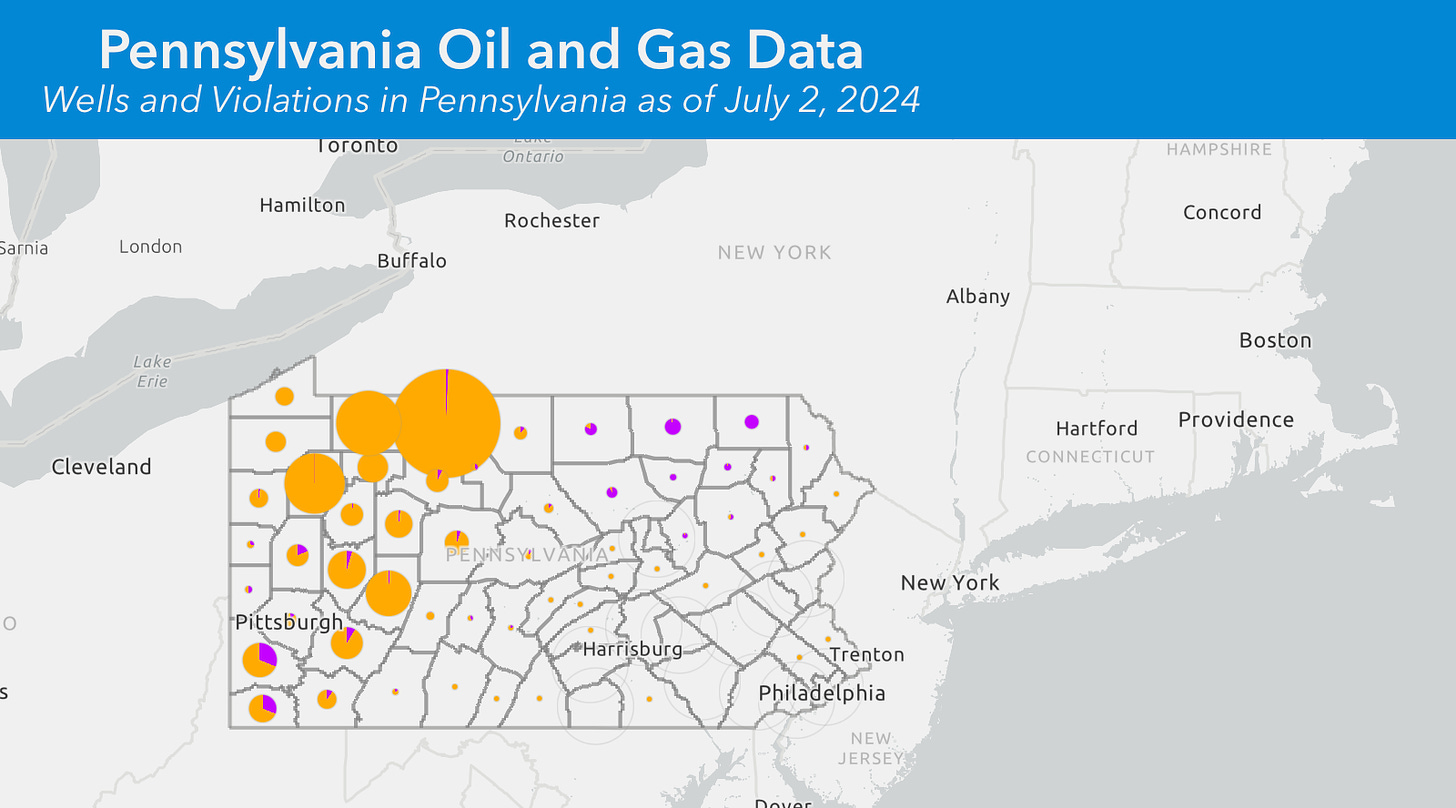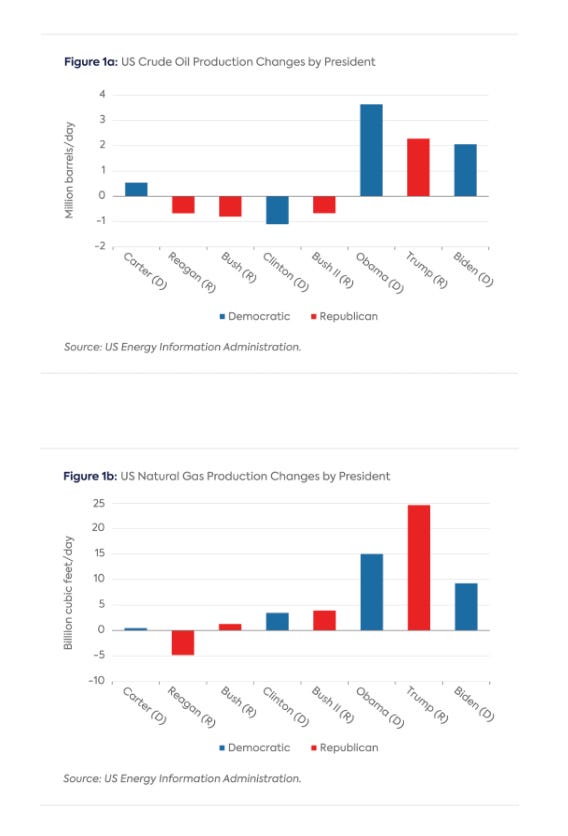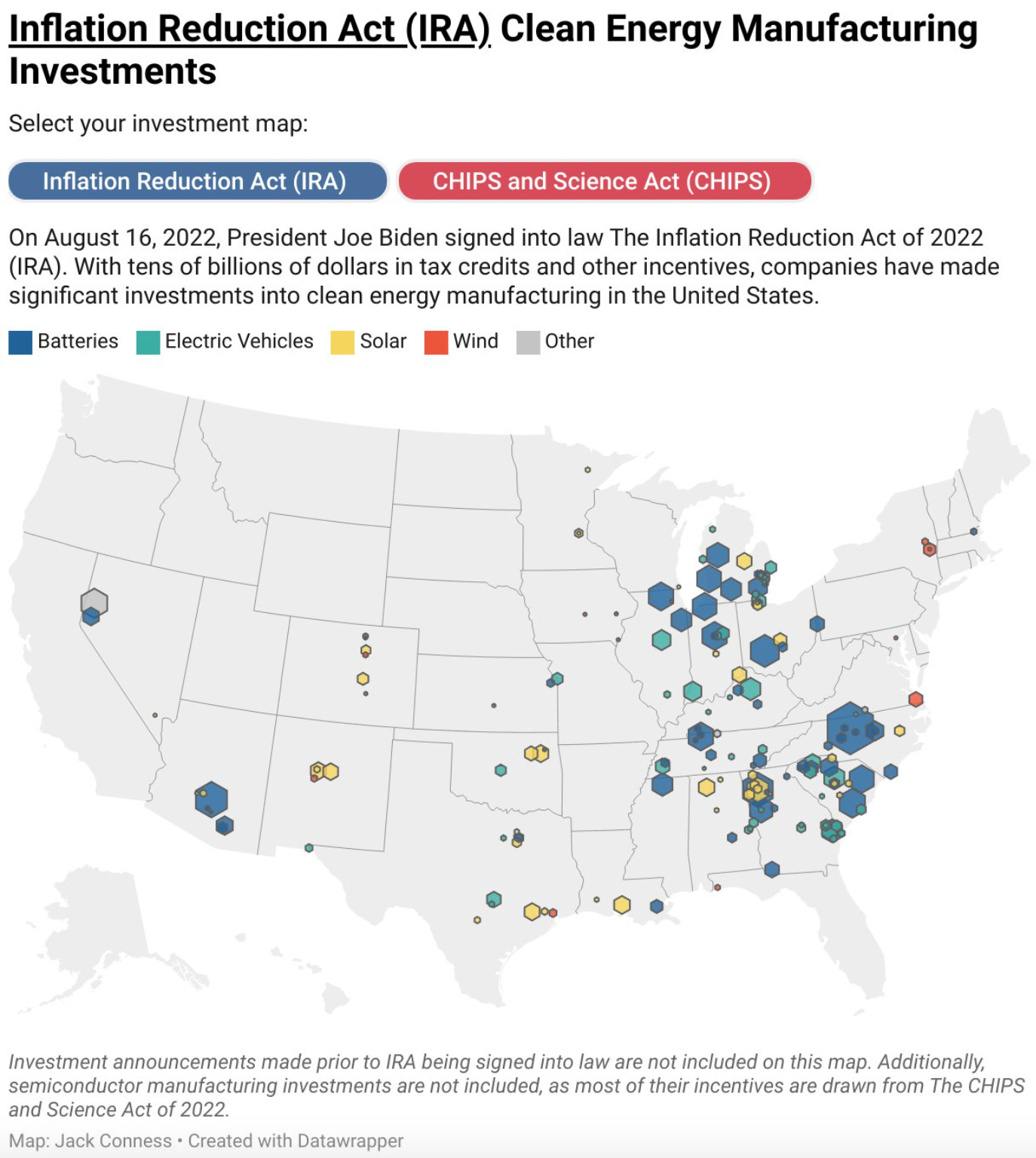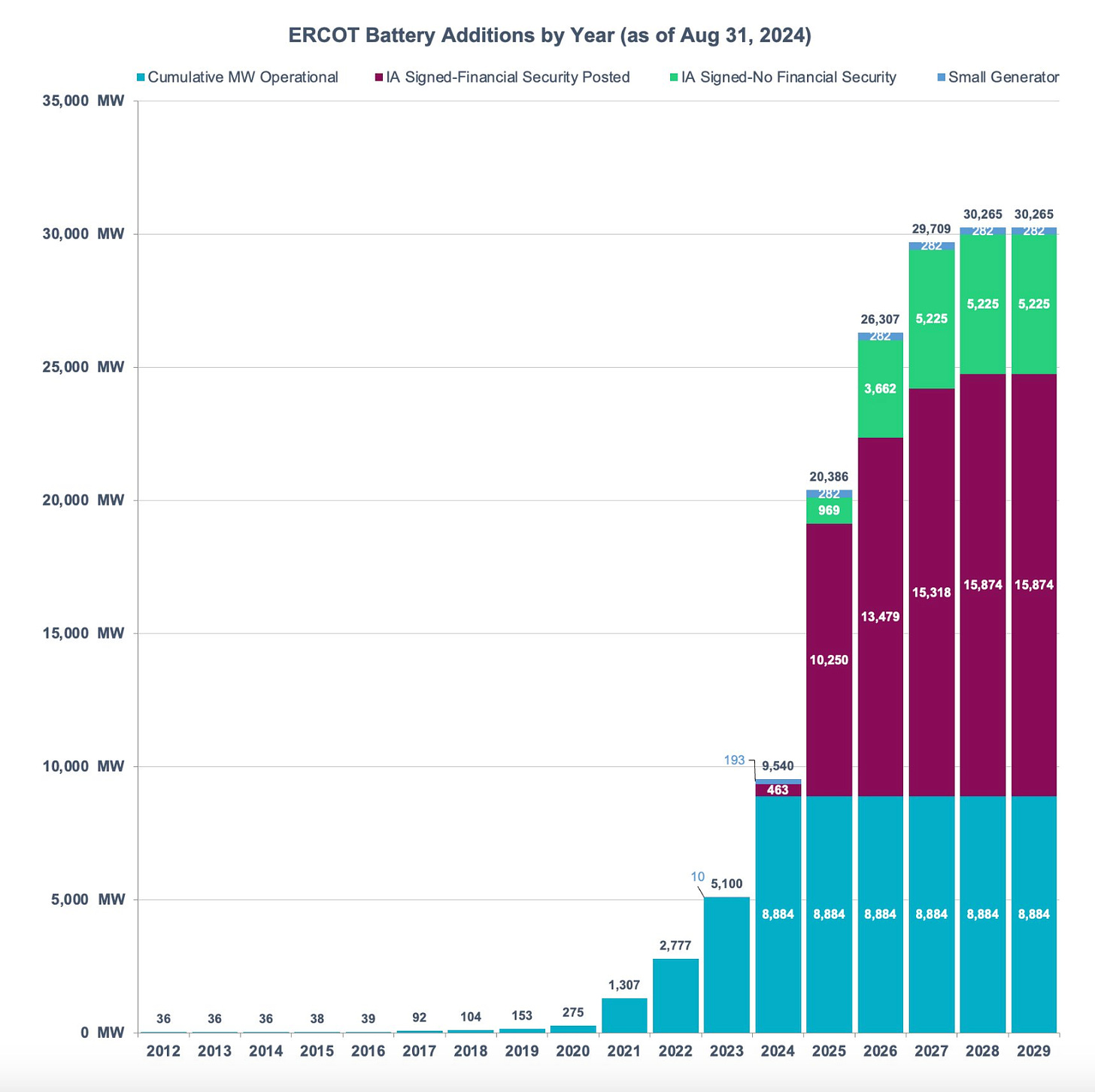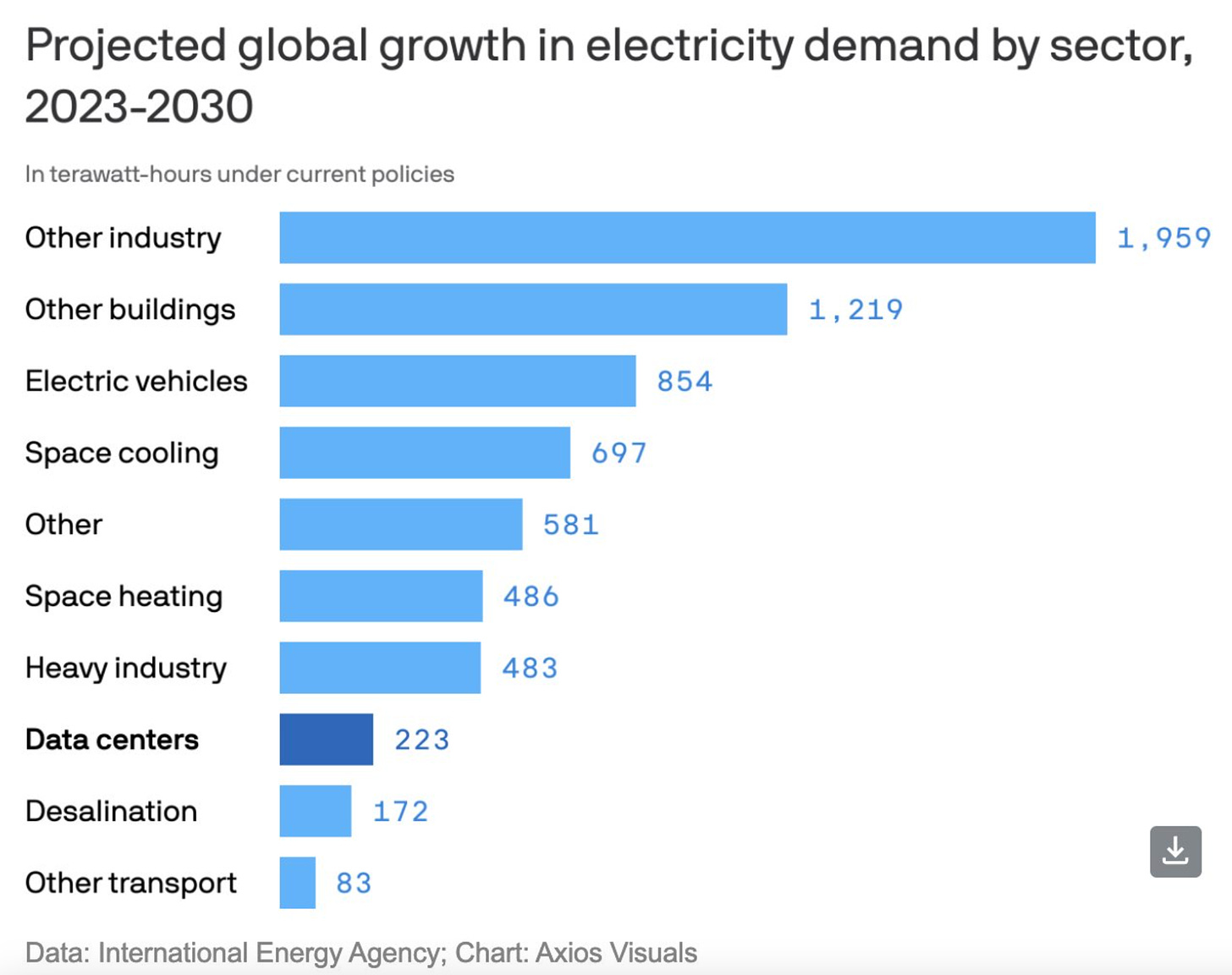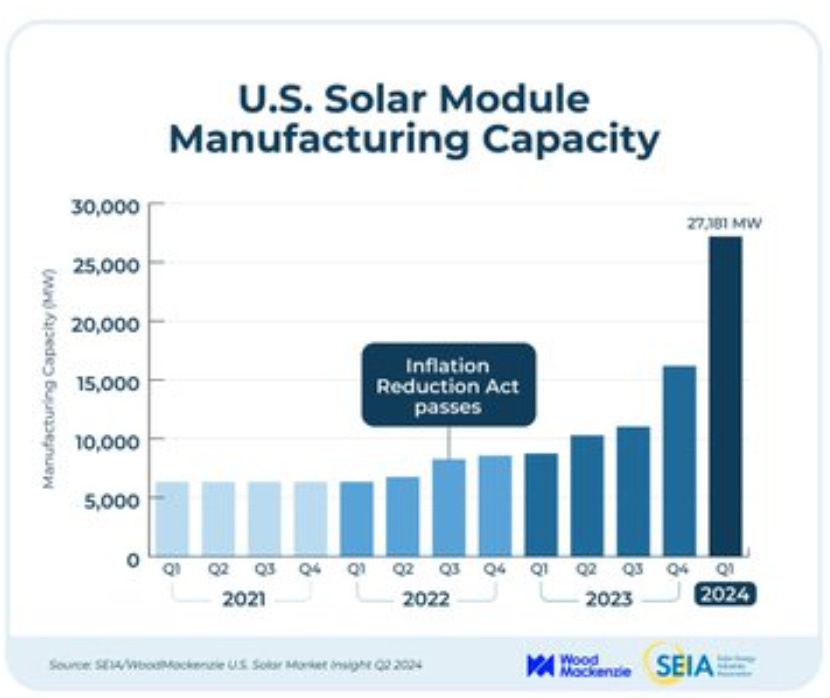Chartbook 329 Yelling at the TV - The non-debate about climate in the US Presidential debate and what it hides.
Carbon Notes 19
“The Biden-Harris Administration is doing exactly what JD Vance seems to think is good policy.” (Jesse Jenkins) October 3 2024 Twitter
The US election challenges our securely anchored perception of reality in many ways. One important respect is the climate crisis and climate policy.
Even as, weeks before the vote, the climate crisis arrives on the coasts of the United States in the form of giant hurricanes, the candidates are barely talking about it. As hurricane scientists Dr Jeff Masters pointed out in a recent twitter post : Hurricane Helene’s devastating Cat 4 landfall on the evening of 26 September “gives the U.S. a record eight Cat 4 or Cat 5 Atlantic hurricane landfalls in the past eight years (2017-2024), seven of them being continental U.S. landfalls. That’s as many Cat 4 and 5 landfalls as occurred in the prior 57 years.”
Much of the havoc delivered by Helene, particularly in the Appalachian region, came in the form of 20 trillions gallons of water swept up in the Gulf of Mexico and delivered to ill-prepared inland areas with devastating force.
Immediate attribution studies tracked the link between climate change and the force of precipitation.
And yet, if you had the stomach to watch the Presidential debates, you will have noticed the complete absence of any serious climate discussion. As Leah Aronowsky, a science historian at the Columbia Climate School, commented: "I think what we learned last night is that climate really is not on the ballot this fall".
Is this denial? Or something else?
Part of this is the electoral math. Trump has dismissed the climate crisis as unreal. He jokes about sea level rise. He has promised to withdraw, again, from the 2015 Paris agreement, to end EV subsidies and to boost fossil fuel production for energy-intensive growth. Whatever his personal views, he has no doubt seen the polls that fully support this line.
A mere 11 percent of Trump supporters say that climate change is important in deciding their vote, and god only knows what those 11 percent who vote for Trump on account of climate, actually think. Amongst Trump voters, climate ranks dead last in a list of top ten obvious concerns. That lopsided score is not so much an expression of lack of interest, but one of rejection. Trump voters know that the climate issue is a liberal talking point. When 90 percent of them say it is not important, they are expressing their scorn for that agenda. Racial and ethnic inequality, another hot button “liberal” issue, scores in the same range.
On the other hand, Harris knows that she has the “climate vote” locked up. Anyone who prioritizes climate is going to be voting for her anyway. Whatever policy she adopts, she is always going to be the lesser evil. Meanwhile, Harris has to win Pennsylvania and she knows she is taking a risk if she takes a strong stance against fracking. Pennsylvania is a fossil fuel state.
Source: Fractracker
So, Harris has reversed the opposition to fracking she expressed way back in 2019. She now champions the oil and gas production record of the Biden administration, which is formidable.
Source: Center on Global Energy Policy Columbia
The chart maps increments to production. Under Biden, growth has slowed in both oil and gas compared to the glory years of the early fracking boom. But add up the expansion since 2009 and the USA is now the largest fossil fuel producer the world has ever seen. Despite all the Sturm und Drang around renewables, the trend in US energy policy under the last three presidents is not away from fossil fuels but deeper into commitment to oil and gas, regionally, nationally and globally.
Arnaud Leparmentier in an interesting write up in Le Monde comments that: “Harris has found herself in a paradoxical situation: She has had to claim the policy of energy transition while bragging about drilling more oil than ever, in the name of national independence.”
Is it really a paradox? Or, is there in fact, a basic agreement between Trump and Harris. They both agree that what America needs is “more, more, more” energy. For Harris, the cornucopian promise of green and clean energy - electricity cheaper than ever before - resolves the paradox. Insofar as they are arguing it is over the question of who will do a better job in delivering that energy and in what form.
In 2016 Trump campaigned hard on promises to coal states. He could not stop the slide. Coal has fallen to just 16% of electricity production compared to more than 50% in 2008. The question about Trump, as much as anything, is whether he cares about coherent policy at all. With the right lobbying he might well be open to defensive measures and deregulation that would slow coal’s further decline.
The energy-growth consensus does not exclude low-carbon energy sources. And this crosses across party lines. On the one hand the Democrat-aligned experts trumpet the investment triggered by the Inflation Reduction Act.
Source: Jack Conness
On the other hand, it is no secret that “red state” Texas, despite the best efforts of local Republicans to get in the way, is emerging as a renewable energy champion. Solar power is making an increasingly huge contribution to the autonomous Texas electricity grid, sustaining an economy that is larger than that of Italy. A large investment in batteries will provide stability.
Source: Jesse Peltan
Elon Musk, who champions both the private space business and EVs, is Trump’s most vocal and most generous backer. And despite the carping of skeptics the uptake of EVs in the United States has not flatlined. Tesla and other manufacturers sales have picked up again strongly in 2024. A broad swath of upper middle class society in America - the families that can afford EVs and hybrids - are beginning to shift away from internal combustion engines.
Another point of intersection is that the AI giants that are the darlings of the stockmarket have woken up to the fact that their data centers have huge power demands and that this will make it hard to maintain their “Californian” ideals of carbon neutrality unless they can massively expand carbon-free power supply. The question of data center power demand has attracted an inordinate amount of comment out of proportion to its actual scale.
Data centers are big energy users and their demands will grow. But they are just one driver of rising electricity demand. In the process of “electrifying everything”, which is the mantra of the energy transition, there are going to be even larger demands from industry, households and transport. And as the American debate clearly recognizes, the key issue is transmission. “No transition without transmission” is a mantra of the moment. This again has the effect of scrambling the political fronts because permitting is a matter of regulation and those who recognize the urgency of the climate crisis often find themselves at odds with “environmental” activists opposing new power lines often on specious grounds.
What gives the data center power question a particular flavor is that the requirement is for steady power and this has steered a lot of attention towards nuclear deals. An ecomodernist coalition seems to be emerging based around big tech, AI and nuclear power. No one in Berlin should expect any sympathy for Germany’s stance on nuclear power from a Harris administration, let alone a Trump team.
One of the attractions of nuclear power is that America still has a leading role in the technology. And, as campaigners like to point out, no administration has been more supportive of nuclear power in recent years than the Biden team. The question is whether the established nuclear industry or the herd of new energy start ups can, this time, deliver on their promises. For now at least, the animal spirits of the atomic lobby are back.
The same spirit of a frustrated bipartisan consensus over energy and growth also extends sotto voce to renewable energy. The heartfelt expostulation from the acclaimed energy and climate campaigner Jesse Jenkins with which I began this piece, came after the Vice Presidential debate in which JD Vance had called for more PV panels to be produced in America. The response from campaigners like Jenkins and others is:
Climate journalist Michael Thomas immediately supplied the relevant data, which show a sharp increase in US solar module manufacturing capacity to 27 GW. By comparison with China’s capacity that is puny, but their frustration is clearly well merited.
h/t Michael Thomas
Jenkins: “I also yelled this at the TV during the debate! The Biden Admin has restored substantial tariffs on Chinese made solar panels (and EVs, and batteries and more...). We import ZERO solar panels from China.”
And then Jenkins continued:
“The US is even imposing tariffs on solar panels made on southeast Asian countries (Malaysia, Thailand etc) by Chinese firms to combat "unfair trade practices" and protect US solar manufacturing. The Biden-Harris Administration is doing exactly what JD Vance seems to think is good policy.”
To be clear, Jenkins here is making a political point. He is outraged by Vance’s post-truth refusal to recognize the actual reality of the ongoing energy transition. Jenkins as one of the most sophisticated contributors to the policy debate clearly recognizes the complex trade-offs involved in promoting green energy as a national industrial policy priority and making affordable and high quality imported EV more expensive for US consumers. For a sophisticated debate featuring Jenkins and Robinson Meyer and the EV and China expert Ilaria Mazzocco, check out this podcast.
In another extraordinary public service Jenkins has made his Princeton lectures on Electricity available online.
What his commentary on the debate highlights, is that the US election is perverse not only for its failure to address the climate crisis ongoing around us. It is perverse also because the post-truth posturing of the GOP “leadership”, obscures the increasingly obvious fact that American society and politics is moving to a point where there is a broad-based nationwide coalition behind a muscular, nationalist, nuclear-curious, new energy coalition - call it “Big Tent IRA”. This is organized around the recognized priority of satisfying new energy needs in new ways. It should not be confused with a coherent or consistent climate policy. The recent expansion of America’s fossil fuel sector under Democratic and Republican Presidencies makes that impossible. But acknowledging the existence of that coalition, would, at least, give new momentum and long-term confidence to the “new energy” expansion that is happening in the US as everywhere else. Whether Trump or Harris is elected, may be less decisive for the overall growth of this coalition, than the way that it is, or is not organized. Harris and her team will surely hope to continue the effort of the Biden administration, to broaden and consolidate the new energy coalition across blue state and red state lines. Under Trump there will be slower growth and less coherence. One can expect both disavowal of actually existing facts on the ground and, as attested by the debates, a more capricious and polarizing atmosphere. The best one can hope for, perhaps, is some gradual accommodation of the GOP to the new realities of the American economy and American society. The energy system is shifting, whether they like or understand it or not.
I love writing Chartbook. I am delighted that it goes out for free to tens of thousands of readers around the world. In an exciting new initiative we have launched a Chinese edition of Chartbook. What supports this activity are the generous donations of active subscribers. Click the button below to see the standard subscription rates. I keep them as low as substack allows, to ensure that supporting Chartbook costs no more than a single cup of Starbucks per month. If you can swing it, your support would be much appreciated.




